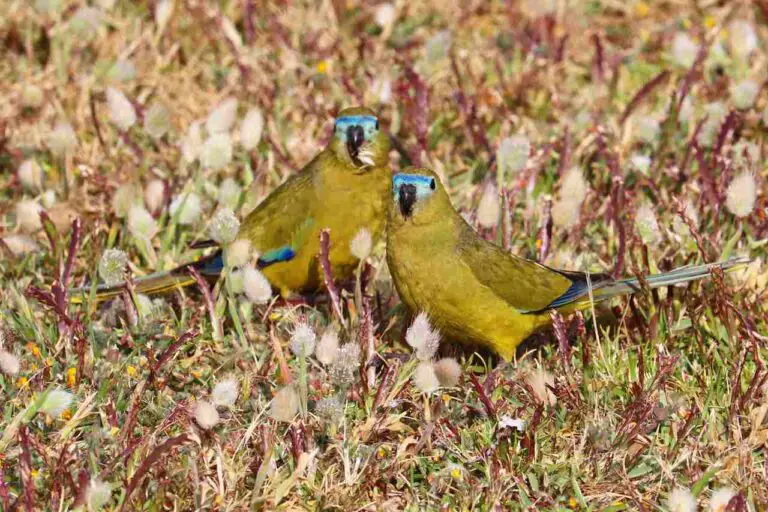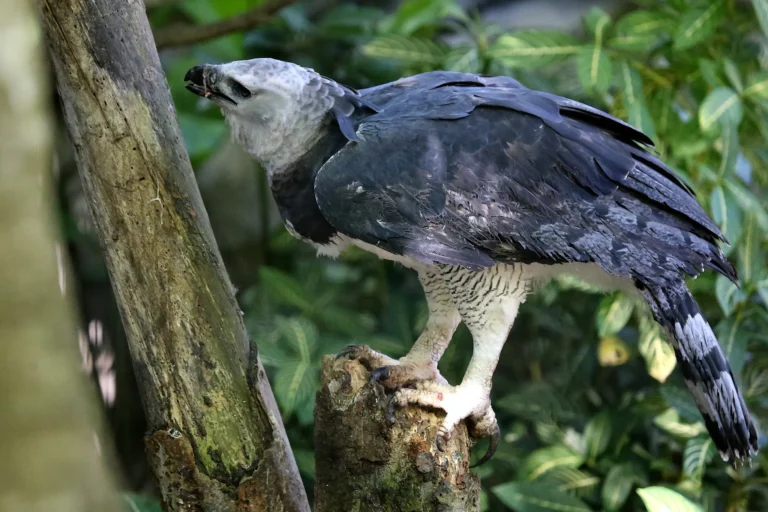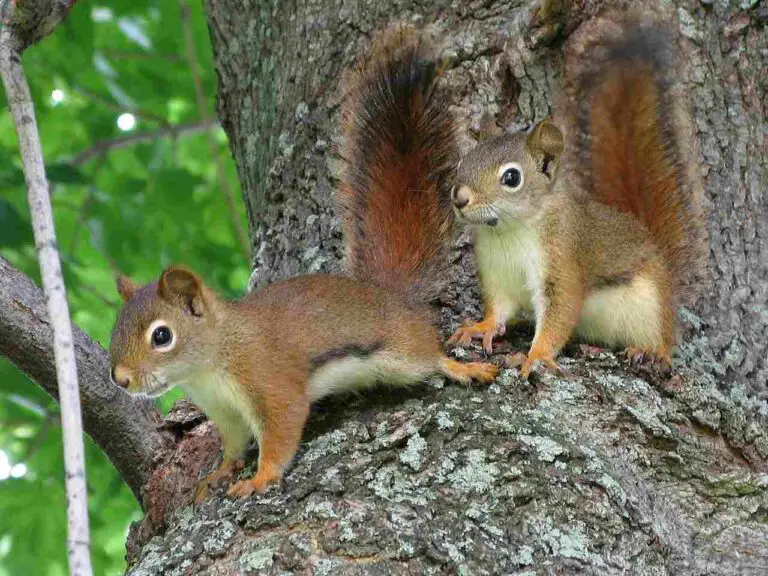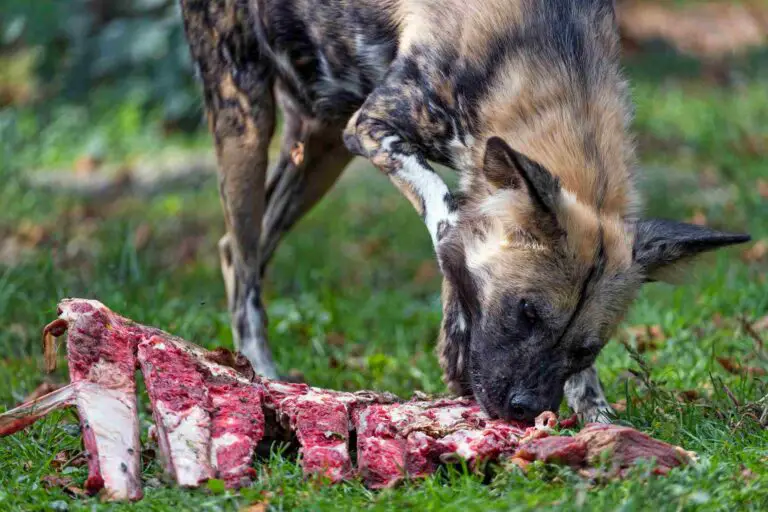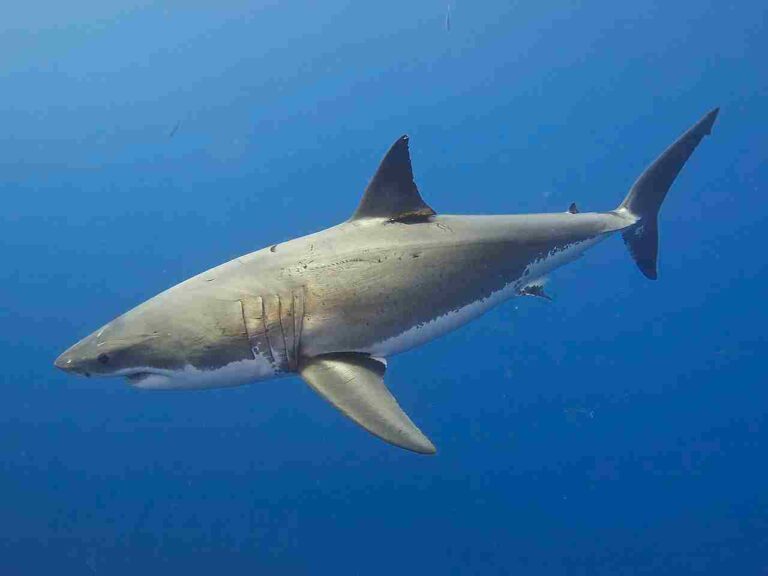What Do Prairie Dogs Eat? Prairie Dog Diet Discussed
Prairie dogs in the wild mainly eat plant materials including foliage from grasses and forbs, shrubs, as well as fleshy stems, flowers, succulent parts of cacti, tubers like potatoes, various seeds, as well as other vegetables.
Prairie dogs in captivity can be fed various vegetables like carrots, as well as tubers, pellets, and hay.
Below is a brief discussion of food sources for prairie dogs;
1). Foliage from Grasses, Shrubs and Forbs
Prairie dogs have a diverse diet that consists of various plant materials. One of the main components of their diet is foliage from grasses, shrubs, and forbs. This type of vegetation makes up the majority of their diet because it is readily available in their natural habitat.
Grasses are a significant part of the prairie dog’s diet. They consume the leaves and stems of different grass species, such as buffalo grass, blue grama grass, and western wheatgrass. These grasses provide essential nutrients and fiber for the prairie dogs.
Shrubs also play a role in the prairie dog’s diet. They feed on the leaves and stems of shrubs like sagebrush, rabbitbrush, and greasewood. These shrubs offer additional nutrients and variety to their diet.
Forbs, which are herbaceous flowering plants, are another important food source for prairie dogs. They consume the leaves, stems, and flowers of forbs like sunflowers, dandelions, and wildflowers. Forbs provide a rich source of vitamins and minerals for the prairie dogs.
The availability of foliage from grasses, shrubs, and forbs in their natural habitat ensures that prairie dogs have a consistent food source. These plant materials are abundant and provide the necessary nutrients for their survival and reproduction.
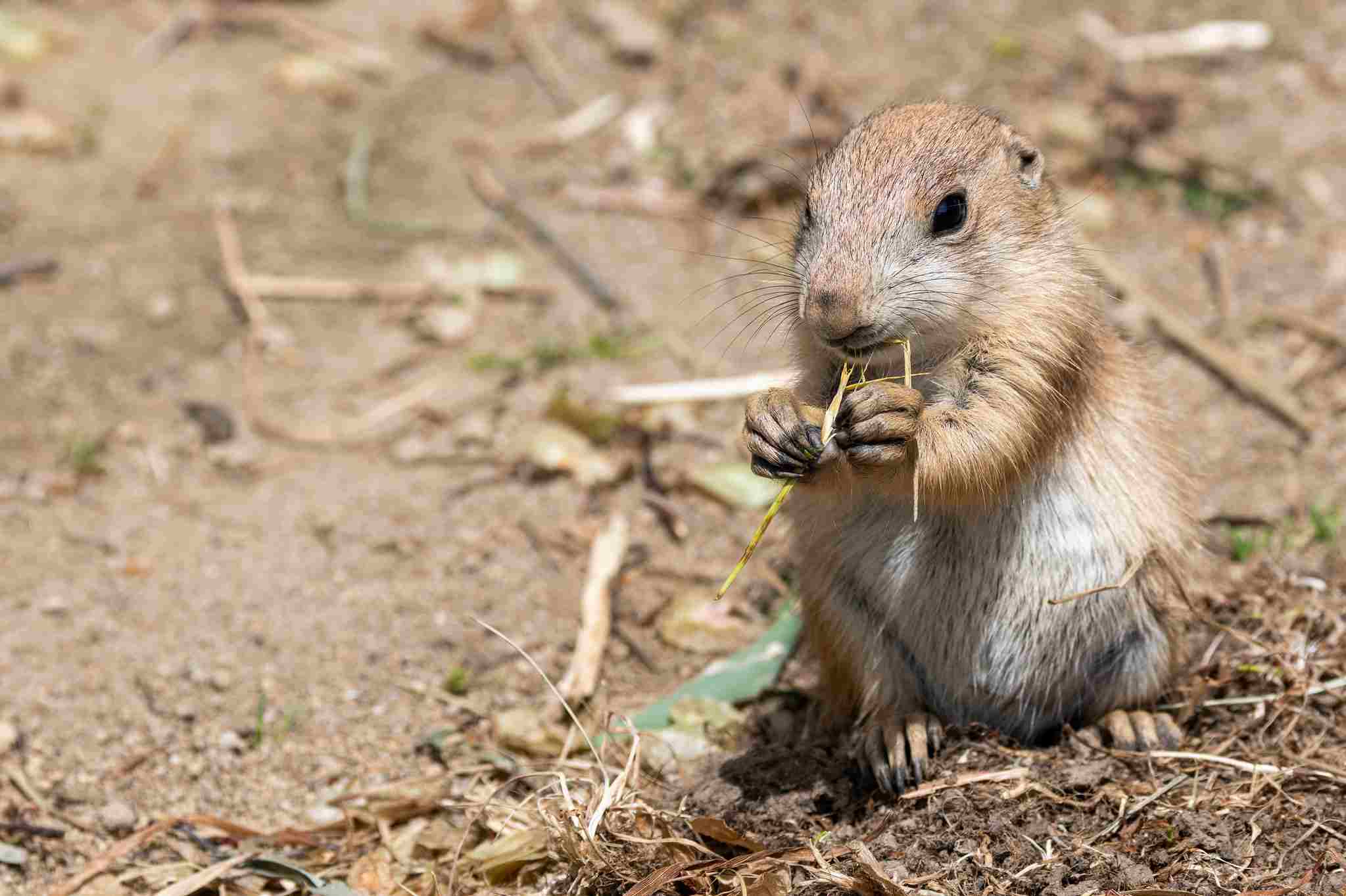
2). Fleshy Stems
Prairie dogs also consume fleshy stems as part of their diet. These stems provide a valuable source of moisture and nutrients for the prairie dogs. They are often found in plants such as yucca, prickly pear cactus, and other succulent plants. The fleshy stems offer a refreshing and hydrating option for the prairie dogs, especially in arid environments where water sources may be limited.
The fleshy stems of plants are not only a source of hydration but also provide essential vitamins and minerals. They contain nutrients such as vitamin C, which is important for the prairie dogs’ overall health and immune system. Additionally, these stems can be a good source of fiber, aiding in digestion and maintaining a healthy gut.
Prairie dogs have adapted to include fleshy stems in their diet to ensure they have access to water and essential nutrients. These stems are a valuable resource, particularly during dry seasons when other water sources may be scarce. By consuming fleshy stems, prairie dogs can maintain their hydration levels and meet their nutritional needs.
3). Flowers
Flowers are another important component of the prairie dog diet. Prairie dogs consume a variety of flowers, which provide them with essential nutrients and contribute to their overall health. These vibrant and fragrant blooms offer a source of both sustenance and enjoyment for these herbivorous creatures.
Flowers are rich in nectar, a sweet liquid that serves as a valuable energy source for prairie dogs. Nectar is packed with carbohydrates, providing the prairie dogs with the fuel they need to sustain their daily activities. By visiting flowers and sipping on their nectar, prairie dogs can replenish their energy levels and maintain their active lifestyle.
In addition to nectar, flowers also contain pollen. Pollen is a powdery substance produced by the male parts of flowers and is an important source of protein for prairie dogs. Protein is crucial for their growth, development, and maintenance of bodily functions. By consuming flowers and their pollen, prairie dogs can meet their protein requirements and ensure their overall well-being.
Furthermore, flowers offer a diverse array of vitamins and minerals that are essential for the prairie dogs’ health. These nutrients support various bodily functions, including immune system function, bone health, and reproductive health. By incorporating flowers into their diet, prairie dogs can obtain these vital nutrients and maintain optimal health.
4). Succulent Parts of Cacti
Prairie dogs also consume the succulent parts of cacti, which provide them with hydration and essential nutrients. The juicy flesh of cacti serves as a water source for these herbivores, especially in arid environments where water is scarce. By consuming the succulent parts of cacti, prairie dogs can stay hydrated and maintain their bodily functions.
In addition to water, cacti offer a variety of nutrients that contribute to the prairie dogs’ diet. These include vitamins, minerals, and antioxidants that support their overall health and well-being. The high water content of cacti also aids in digestion and helps prevent dehydration in these animals.
Furthermore, the succulent parts of cacti provide prairie dogs with fiber, which is important for their digestive system. Fiber helps regulate their bowel movements and promotes a healthy gut. By including cacti in their diet, prairie dogs can ensure proper digestion and prevent digestive issues.
5). Tubers
Tubers, like potatoes and yams, are another important component of the prairie dog diet. These underground plant structures provide a rich source of carbohydrates and energy for these herbivores. Prairie dogs have adapted to dig deep into the ground to find tubers, which serve as a valuable food resource, especially during times when other vegetation may be scarce.
The consumption of tubers offers several benefits to prairie dogs. Firstly, tubers are packed with nutrients such as vitamins, minerals, and antioxidants, which contribute to the overall health and vitality of these animals. The carbohydrates found in tubers provide a quick and efficient source of energy, allowing prairie dogs to sustain their daily activities and survive in their natural habitat.
Moreover, tubers are a valuable food source during the winter months when other food options are limited. Prairie dogs have the ability to store tubers in their burrows, creating a food reserve that can be accessed when foraging becomes challenging. This storage behavior helps them survive the harsh conditions of winter and ensures their long-term survival.
In addition to their nutritional value, tubers also play a role in maintaining the prairie dogs’ dental health. The act of gnawing on tubers helps wear down their continuously growing teeth, preventing dental issues and promoting oral hygiene.
6). Seeds
Seeds are another important component of the prairie dog diet. These small, nutrient-rich packages are consumed by prairie dogs and provide them with essential nutrients and energy. Prairie dogs have adapted to forage for seeds from various plant species, including grasses, shrubs, and forbs.
Seeds offer several benefits to prairie dogs. Firstly, they are a concentrated source of nutrients, including proteins, fats, vitamins, and minerals. These nutrients are crucial for the growth, development, and overall health of prairie dogs. By consuming seeds, prairie dogs can meet their nutritional requirements and maintain their well-being in their natural habitat.
Moreover, seeds provide a reliable source of energy for prairie dogs. The carbohydrates present in seeds are converted into glucose, which is used as fuel for their daily activities. This energy is particularly important during periods of high activity, such as foraging, burrow maintenance, and social interactions.
In addition to their nutritional and energy benefits, seeds also play a role in the reproduction of prairie dogs. Some plant species produce seeds with high levels of reproductive hormones, which can stimulate the breeding behavior of prairie dogs. By consuming these seeds, prairie dogs can enhance their reproductive success and contribute to the population growth of their species.
Furthermore, the consumption of seeds by prairie dogs has ecological implications. Prairie dogs play a vital role in seed dispersal, as they consume seeds from various plant species and then disperse them through their feces. This process helps in the regeneration and distribution of plant species, contributing to the overall biodiversity and ecosystem health of the prairie dog habitat.
7). Vegetables
Vegetables, like carrots, are another type of food that is eaten by prairie dogs. These nutrient-rich plants provide essential vitamins and minerals that contribute to the overall health and well-being of prairie dogs.
One of the main benefits of vegetables in the prairie dog diet is their high fiber content. Fiber plays a crucial role in maintaining a healthy digestive system for these animals. It aids in proper digestion and prevents issues such as constipation. Additionally, the high water content in vegetables helps to keep prairie dogs hydrated, especially during hot and dry periods.
Carrots, in particular, are a favorite vegetable among prairie dogs. They are rich in beta-carotene, which is converted into vitamin A in the body. Vitamin A is essential for maintaining good vision, promoting healthy skin, and supporting the immune system. By including carrots in their diet, prairie dogs can ensure they receive these important nutrients.
Other vegetables that are commonly consumed by prairie dogs include leafy greens like lettuce and spinach. These greens provide a variety of vitamins and minerals, such as vitamin C, vitamin K, and calcium. Vitamin C is important for collagen production and immune function, while vitamin K is necessary for blood clotting. Calcium, on the other hand, is crucial for maintaining strong bones and teeth.
Including a variety of vegetables in the prairie dog diet is important to ensure a well-rounded nutritional intake. Different vegetables offer different nutrients, and by diversifying their diet, prairie dogs can meet all their nutritional needs. This variety also helps to keep their diet interesting and enjoyable.
8). Pellets
Pellets are another important component of the prairie dog diet. These small, compact food sources provide a concentrated dose of nutrients that are essential for the overall health and vitality of these animals. Prairie dogs rely on pellets to meet their dietary needs and maintain their energy levels.
One of the main advantages of pellets is their convenience. They are easy to store and transport, making them a practical food source for prairie dogs. Pellets also have a long shelf life, ensuring that they remain fresh and nutritious for extended periods of time. This is particularly beneficial for prairie dogs living in areas with limited food availability or during harsh weather conditions.
Pellets are specially formulated to provide a balanced diet for prairie dogs. They contain a mix of essential nutrients, including proteins, carbohydrates, vitamins, and minerals. These nutrients are crucial for supporting various bodily functions, such as growth, reproduction, and immune system function. By consuming pellets, prairie dogs can ensure they receive all the necessary nutrients in the right proportions.
In addition to their nutritional value, pellets also help to maintain dental health in prairie dogs. The act of chewing on pellets helps to wear down their continuously growing teeth, preventing dental issues such as overgrowth or malocclusion. This ensures that prairie dogs can continue to eat and forage effectively.
It is important to note that while pellets are a valuable part of the prairie dog diet, they should not be the sole source of nutrition. Prairie dogs thrive on a diverse diet that includes a variety of foods, such as grasses, shrubs, vegetables, and seeds. Pellets should be offered as a supplement to ensure a well-rounded and balanced diet for these animals.
9). Hay
Hay is another important component of the prairie dog diet. It is a type of dried grass that provides essential nutrients and fiber for these animals. Prairie dogs consume hay as part of their natural foraging behavior, and it plays a crucial role in their overall health and digestion.
One of the main benefits of hay is its high fiber content. Fiber is essential for maintaining a healthy digestive system in prairie dogs. It helps to regulate their bowel movements, prevent constipation, and promote the growth of beneficial gut bacteria. By including hay in their diet, prairie dogs can ensure proper digestion and nutrient absorption.
Hay also provides a source of long-lasting energy for prairie dogs. The complex carbohydrates present in hay are slowly broken down in their digestive system, providing a steady release of energy throughout the day. This sustained energy source is particularly important for prairie dogs, as they are active animals that require constant fuel for their daily activities.
In addition to its nutritional benefits, hay also serves as a natural enrichment for prairie dogs. It stimulates their natural foraging instincts and provides mental stimulation as they search for and consume the hay. This enrichment is important for the overall well-being and behavioral health of prairie dogs in captivity.
Are Prairie Dogs Herbivores?
Prairie dogs are often classified as herbivores due to their diet being dominated by plants, which make up over 90% of their total food intake. However, they are not obligate herbivores and also consume invertebrates such as insects and worms. This makes them more accurately classified as omnivores.
The primary components of a prairie dog’s diet are grasses and small seeds. These form the mainstay of their food source throughout the year. In the fall, prairie dogs also incorporate broadleaf forbs into their diet. This variety in their plant consumption allows them to obtain a range of nutrients and adapt to seasonal changes in vegetation availability.
Interestingly, lactating and pregnant female prairie dogs supplement their diets with snow during the winter months. Snow provides them with additional water, which is crucial for their hydration needs during this time. This adaptation showcases the resourcefulness and adaptability of prairie dogs in finding alternative food sources when necessary.
Are Prairie Dogs Omnivores?
While prairie dogs are primarily herbivores, they do exhibit some omnivorous behavior. Plant matter makes up the majority of their diet, accounting for about 98% of their total food intake. However, they also have the ability to supplement their plant-based diet with small invertebrates such as bugs, grasshoppers, beetles, and worms.
Prairie dogs are opportunistic feeders, meaning they take advantage of available food sources. When the opportunity arises, they will consume these invertebrates as a supplementary food source. This behavior showcases their adaptability and ability to diversify their diet when necessary.
The inclusion of small invertebrates in their diet allows prairie dogs to obtain additional nutrients that may not be readily available in plant matter alone. This flexibility in their feeding habits helps them to meet their nutritional needs and adapt to changes in their environment.
It’s important to note that while prairie dogs do consume small invertebrates, their primary reliance is still on plant matter. The vast majority of their diet consists of grasses, seeds, and forbs. These plant-based foods provide them with the necessary energy and nutrients to thrive.
Therefore, prairie dogs can be classified as omnivores due to their occasional consumption of small invertebrates. However, it’s important to recognize that their omnivorous behavior is supplementary to their plant-based diet. The ability to adapt and incorporate different food sources into their diet showcases the resourcefulness of these animals in finding sustenance in their natural habitat.
Prairie Dog Diet
1). Prairie Dog Diet in the Wild
Prairie dogs have a diverse diet in the wild, consisting of seeds, grasses, forbs, shrubs, flowers, succulent stems, insects, and worms. They primarily feed on foliage from various grasses, shrubs, and forbs, which provide them with essential nutrients. Additionally, prairie dogs consume fleshy stems and flowers, which contribute to their overall diet.
They also have a taste for the succulent parts of cacti, which provide them with hydration in arid environments. Tubers, such as those from certain plant species, are another food source for prairie dogs. These underground storage organs provide them with energy and nutrients. Seeds, including those from grasses and other plants, are a significant part of their diet as well.
Prairie dogs also have a preference for vegetables, which they consume when available. They have been observed feeding on various types of vegetables, including leafy greens and root vegetables. Overall, the prairie dog’s diet in the wild is diverse and includes a range of plant materials, insects, and worms, allowing them to adapt to different environments and obtain the necessary nutrients for survival.
2). Prairie Dog Diet in Captivity
In captivity, the diet of prairie dogs can be slightly different from their wild counterparts. While they still require a plant-based diet, there are some additional options to consider. One important aspect of their diet in captivity is the inclusion of vegetables. Prairie dogs can be fed a variety of vegetables, such as leafy greens and root vegetables, which provide them with essential vitamins and minerals. Including vegetables like carrots, broccoli, and spinach ensures a well-rounded diet for these animals.
Another important component of their diet in captivity is pellets. These specially formulated pellets are designed to provide all the necessary nutrients for prairie dogs. They are a convenient and balanced option that ensures the animals receive a complete diet. Additionally, prairie dogs can be given tubers, which are underground storage organs that provide energy and nutrients.
Hay is another essential part of their diet in captivity. It serves as a source of fiber and helps maintain their dental health. Fresh fruits, such as apples and berries, can also be included in their diet as occasional treats. Nuts, like almonds and walnuts, can be given in moderation as a source of healthy fats.
For baby prairie dogs, goats’ milk or a similar formula can be fed via a syringe. This ensures they receive the necessary nutrients for their growth and development.
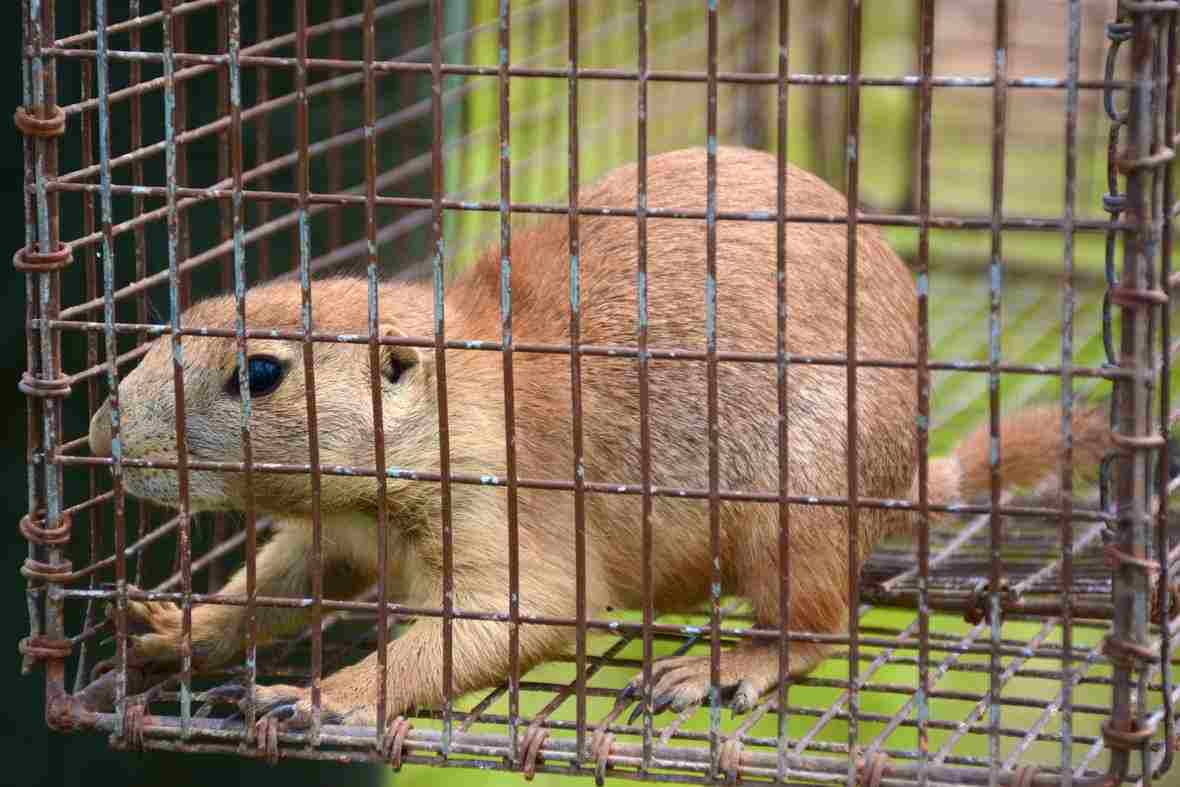
Prairie Dog Food Chain Position
Prairie dogs occupy a unique position in the food chain as level two primary consumers. Alongside other animals such as jackrabbits, termites, grasshoppers, and large mammals like antelopes, they play a crucial role in the ecosystem.
As primary consumers, prairie dogs primarily feed on plants, consuming foliage from grasses, shrubs, and forbs, fleshy stems, flowers, succulent parts of cacti, tubers, seeds, vegetables, pellets, and hay. Their plant-dominated diet, relatively small size, and relatively small trophic impact contribute to their position as primary consumers.
By consuming vegetation, prairie dogs help regulate plant populations and provide a food source for higher-level consumers.
Why The Prairie Dog is a Primary Consumer
1). Plant-dominated Diet
One of the main reasons why prairie dogs are classified as primary consumers is their plant-dominated diet. These small rodents primarily feed on various plant materials, making them herbivores.
In the wild, prairie dogs rely heavily on foliage from grasses, shrubs, and forbs as a significant part of their diet. They graze on the leaves and stems of these plants, utilizing the abundant vegetation found in their grassland habitats. This consumption of foliage allows them to obtain essential nutrients and energy for their survival.
Additionally, prairie dogs also consume fleshy stems from certain plants. These stems provide them with moisture and nutrients, especially during dry periods when water sources may be scarce. By including fleshy stems in their diet, prairie dogs can adapt to the challenging environmental conditions of their habitats.
Furthermore, flowers play a role in the prairie dog’s plant-dominated diet. They feed on the petals and nectar of various flowering plants, contributing to the pollination process as they move from one flower to another. This interaction between prairie dogs and flowers highlights their ecological importance within the grassland ecosystem.
By consuming a plant-dominated diet, prairie dogs play a vital role as primary consumers in the food chain. They efficiently convert plant matter into energy, supporting the flow of energy through the ecosystem. Their feeding habits contribute to the overall balance and functioning of the grassland community.
2). Relatively-small Size
The relatively-small size of prairie dogs is another reason why they are classified as primary consumers. These small rodents have a compact body structure, typically ranging from 12 to 16 inches in length and weighing around 1 to 3 pounds.
Their small size allows them to efficiently navigate through their grassland habitats and access the various plant materials that make up their diet. They can easily maneuver through dense vegetation, reaching foliage, fleshy stems, and flowers that may be harder for larger animals to access. This adaptability gives them an advantage in obtaining the necessary nutrients from their plant-dominated diet.
Moreover, the small size of prairie dogs limits their trophic impact on the ecosystem. As primary consumers, they consume plant matter directly, without the need to prey on other animals. This reduces their overall trophic cascading effect compared to secondary and tertiary consumers, which rely on consuming other animals for energy.
The relatively-small trophic impact of prairie dogs contributes to the stability and balance of the grassland ecosystem. They do not exert significant pressure on other species, allowing for a more harmonious coexistence within the food web. This is particularly important in maintaining the abundance and diversity of plant species, as prairie dogs play a role in seed dispersal through their feeding habits.
3). Relatively-small Trophic Impact
The relatively-small trophic impact of prairie dogs is another reason why they are classified as primary consumers. Unlike secondary and tertiary consumers, prairie dogs do not consume as much food or have a significant trophic cascading effect on the ecosystem. This is due to their plant-dominated diet and their small size.
As primary consumers, prairie dogs primarily consume plant matter directly, without the need to prey on other animals. This reduces their overall trophic impact compared to animals higher up in the food chain. Their diet consists of foliage from grasses, shrubs, and forbs, fleshy stems, flowers, succulent parts of cacti, tubers, seeds, vegetables, pellets, and hay. By consuming these plant materials, prairie dogs play a crucial role in seed dispersal and contribute to the energy flow within the prairie food web.
The relatively-small trophic impact of prairie dogs also contributes to the stability and balance of the grassland ecosystem. They do not exert significant pressure on other species, allowing for a more harmonious coexistence within the food web. This is particularly important in maintaining the abundance and diversity of plant species, as prairie dogs help in the dispersal of seeds through their feeding habits.
Prairie Dog Food Web Role
Prairie dogs play a crucial role in the prairie food web, contributing to the energy flow within the ecosystem. As primary consumers, they consume plants and small invertebrates, which helps to maintain the balance of the food web. By consuming plant matter, prairie dogs aid in seed dispersal and contribute to the overall health and diversity of the prairie ecosystem.
However, prairie dogs also serve as an important food source for secondary and tertiary consumers. They become prey for animals higher up in the food chain, such as snakes, hawks, and eagles. This interaction highlights the interconnectedness of the prairie food web and the role that prairie dogs play in supporting the survival and reproduction of other species.
The presence of prairie dogs in the food web creates a dynamic and complex system where energy is transferred from one organism to another. Their consumption of plants and invertebrates provides a source of energy for predators, allowing them to thrive and maintain their populations. This intricate web of interactions ensures the stability and functioning of the prairie ecosystem.
Conclusion
* In this article, we have explored the diverse diet of prairie dogs, examining the various types of vegetation and plant parts they consume. From foliage and fleshy stems to flowers and succulent parts of cacti, prairie dogs have a wide range of food sources in their natural habitat.
* Additionally, we have discussed the importance of tubers, seeds, vegetables, pellets, and hay in the prairie dog diet. These food items provide essential nutrients and contribute to the overall health and well-being of these herbivorous rodents.
* Furthermore, we have examined the differences in the prairie dog diet between the wild and captivity. While prairie dogs in the wild have access to a more diverse range of food options, those in captivity are typically provided with a controlled diet that mimics their natural food sources.
* Moreover, we have explored the role of prairie dogs as primary consumers in the prairie food web. Their plant-dominated diet, relatively small size, and trophic impact make them an important link in the energy flow within the ecosystem.
* Lastly, we have highlighted the interconnectedness of the prairie food web and the role that prairie dogs play in supporting the survival and reproduction of other species. By being a food source for secondary and tertiary consumers, prairie dogs contribute to the overall stability and functioning of the prairie ecosystem.
FAQs
1. What Can I Feed a Prairie Dog?
When it comes to feeding a prairie dog, it’s important to provide a balanced diet that meets their nutritional needs. The majority of a prairie dog’s diet consists of grasses and forbs, which are flowering plants. These plants provide the necessary fiber and carbohydrates for their digestive system.
In addition to grasses and forbs, prairie dogs can also eat a variety of vegetables and fruits. Some suitable options include leafy greens like spinach and kale, as well as carrots, broccoli, and apples. These foods can be given in small amounts as occasional treats to add variety to their diet.
It’s important to note that prairie dogs are herbivores, meaning they do not eat meat. Feeding them meat or any animal-based products can lead to digestive issues and health problems. It’s best to stick to a plant-based diet for these animals.
To ensure your prairie dog’s health, it’s also essential to provide them with fresh water at all times. Water is crucial for their hydration and overall well-being. Make sure to use a water bottle or dish that is easily accessible for them.
2. Do Prairie Dogs Eat Meat?
Prairie dogs are primarily herbivores and meat is not a notable part of their diet. While they may occasionally consume small insects or other animal matter, it is not a significant source of nutrition for them.
Prairie dogs obtain most of their protein from plant-based sources such as grasses, forbs, and vegetables. Meat should only be included in their diet very sparingly, if at all. Feeding them excessive amounts of meat or animal-based products can lead to digestive issues and health problems. It is best to stick to a plant-based diet to ensure their overall well-being.
3. Do Prairie Dogs Eat Apples?
Prairie dogs do eat apples, but they should be given in moderation. Apples can be a tasty treat for prairie dogs, providing them with some variety in their diet. However, it’s important to remember that apples are high in sugar, so they should only be given as an occasional treat. Too much sugar can lead to health issues such as obesity and dental problems. When feeding apples to prairie dogs, make sure to remove the seeds and core, as these can be harmful. Always prioritize a balanced diet of grasses, forbs, and vegetables for their overall well-being.
4. What do Prairie Dogs Drink?
Prairie dogs primarily drink water to quench their thirst. Water is essential for their survival and overall well-being. They obtain water from various sources in their habitat, including natural water bodies such as rivers, streams, and ponds. Prairie dogs also rely on the moisture content in the vegetation they consume, which helps to hydrate them.
In the wild, prairie dogs have adapted to their environment and have developed efficient ways to obtain water. They are known to dig burrows near water sources, allowing them easy access to water when needed. These burrows also help to regulate the temperature and humidity levels within their underground homes.
It is important to ensure that prairie dogs have access to clean and fresh water at all times, especially in captivity. Providing a shallow dish or a water bottle with a sipper tube can help them stay hydrated. It is recommended to regularly clean and refill the water source to maintain its cleanliness.
While water is the primary source of hydration for prairie dogs, it is important to note that they do not rely solely on water for their hydration needs. The vegetation they consume, which consists of grasses, forbs, and vegetables, also contains moisture that contributes to their overall hydration.
5. Can Prairie Dogs Eat Human Food?
Prairie dogs should not be fed human food. While they are omnivorous and can consume a variety of foods, including plants, insects, and small animals, human food is not suitable for their diet. Human food often contains high levels of salt, sugar, and unhealthy fats, which can be harmful to prairie dogs.
Feeding them human food can lead to obesity, dental problems, and digestive issues. It is important to provide a balanced diet that mimics their natural food sources, such as fresh grasses, hay, vegetables, and small amounts of fruits.
6. What do Prairie Dogs Eat in The Wild?
In the wild, prairie dogs primarily eat grasses and other vegetation. They are herbivores, meaning they rely on plants for their nutrition. Prairie dogs have a specialized digestive system that allows them to efficiently break down and extract nutrients from tough plant material. They also consume a variety of grasses, herbs, and shrubs, depending on what is available in their habitat.
This diverse diet helps them meet their nutritional needs and adapt to different environmental conditions. Additionally, prairie dogs may occasionally eat seeds, fruits, and flowers.
7. What do Prairie Dogs Eat in The Winter
During the winter months, prairie dogs face a scarcity of their usual food sources. To adapt to this challenging season, they rely on stored food reserves. Prairie dogs are known to gather and store grasses, seeds, and other vegetation during the warmer months.
These food caches serve as their primary source of nutrition during the winter. By carefully selecting and storing food, prairie dogs ensure they have enough sustenance to survive until spring arrives. This behavior demonstrates their resourcefulness and ability to plan ahead for periods of food scarcity.
8. Can Prairie Dogs Eat Rabbit Food?
Prairie dogs primarily feed on vegetation, but their diet can vary depending on the availability of food sources. When it comes to rabbit food, prairie dogs can consume certain types of it. However, it is important to note that rabbit food is not specifically formulated for prairie dogs and may not provide all the necessary nutrients they need.
Rabbit food typically consists of a mix of hay, pellets, and vegetables. Prairie dogs can eat the hay component of rabbit food as it is similar to the grasses they consume in the wild. The pellets may also be consumed, but they should not make up the majority of their diet.
While prairie dogs can eat some vegetables found in rabbit food, it is crucial to avoid feeding them vegetables that are high in sugar or contain harmful substances. It is best to consult with a veterinarian or a prairie dog expert to ensure you are providing a balanced and appropriate diet for your pet prairie dog.
9. Where do Prairie Dogs Live?
Prairie dogs live in the grasslands of North America, specifically in the semiarid and arid regions, where they are natives. They can be found in various states such as Colorado, Wyoming, Montana, and Texas. These rodents prefer open areas with short grasses, as it allows them to easily spot predators.
Prairie dogs create complex underground burrow systems, which serve as their homes and provide protection from extreme weather conditions and predators. These burrows also play a crucial role in maintaining the ecosystem, as they provide shelter for other animals like burrowing owls and snakes. The specific location of prairie dog colonies can vary, but they are typically found in areas with suitable vegetation and soil conditions.
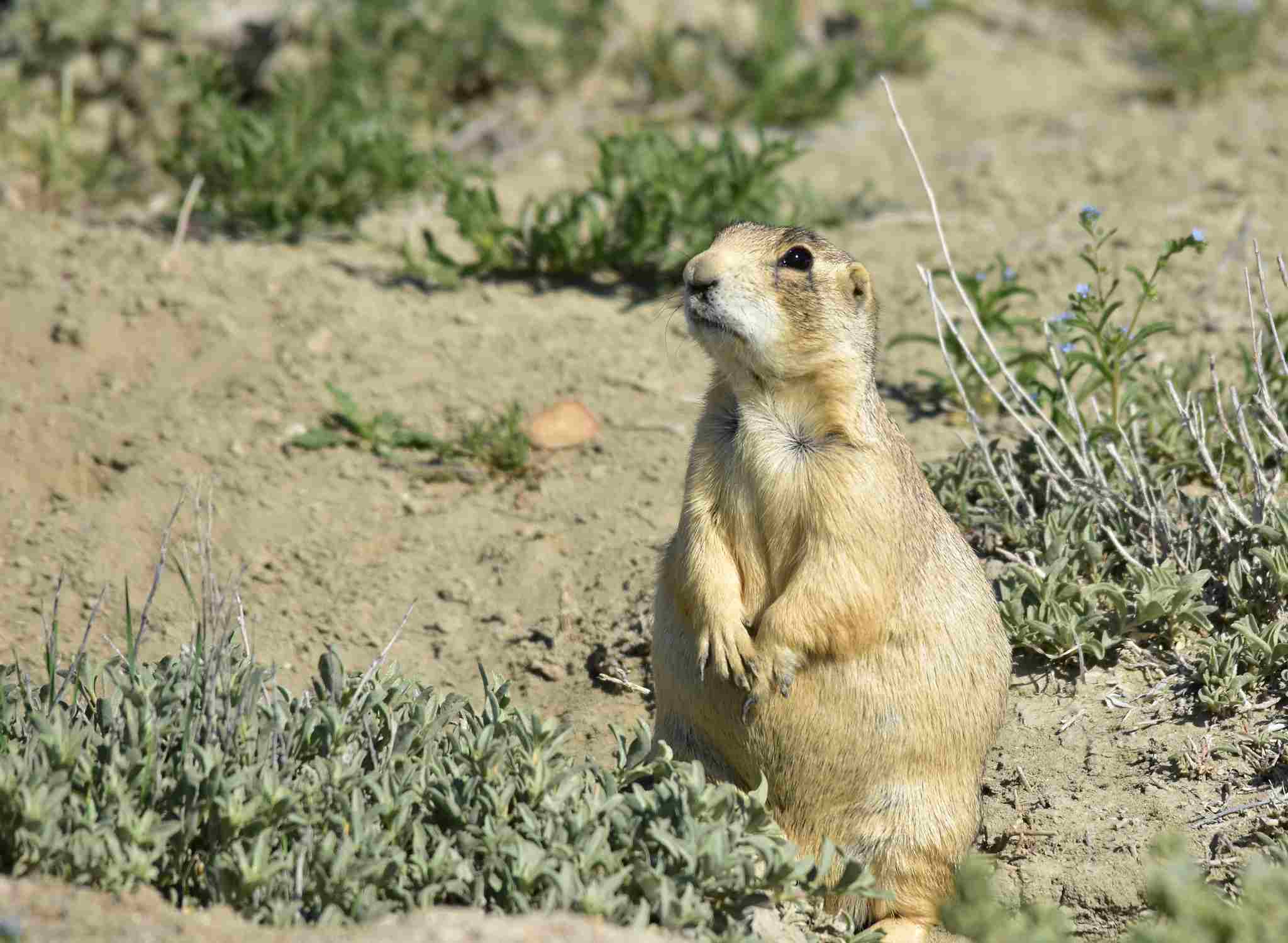
10. Do Prairie Dogs Eat Insects?
Prairie dogs do eat insects. They have a varied diet that includes insects like beetles and grasshoppers. Insects provide an important source of protein for prairie dogs, especially during the breeding season when they need extra energy.
While prairie dogs primarily feed on grasses and other vegetation, they are opportunistic eaters and will consume insects when available. This helps to diversify their diet and meet their nutritional needs. Insects also play a role in the prairie dog’s ecosystem, as they contribute to nutrient cycling and provide food for other animals in the grassland habitat.
11. What Can Prairie Dogs Not Eat?
Prairie dogs have a primarily herbivorous diet, but there are certain foods they should avoid. One thing prairie dogs should not eat is processed human food, such as chips or candy. These types of foods are high in salt, sugar, and unhealthy fats, which can be harmful to prairie dogs’ health. Additionally, prairie dogs should not consume toxic plants, such as nightshade or hemlock, as they can be poisonous. It’s important to provide a diet that consists of fresh, natural foods that are suitable for their digestive system. By avoiding these harmful foods, you can ensure the well-being and longevity of your prairie dog.
12. What Type of Animal is a Prairie Dog?
Prairie dogs are a type of ground-dwelling squirrel rodent. They are primarily herbivorous, meaning they mainly eat plants. Prairie dogs have adapted to their grassland habitats and have a specialized diet that consists of grasses, herbs, and leaves. They also consume seeds, roots, and flowers. Their diet is rich in fiber and low in fat, which helps to maintain their overall health. Prairie dogs have strong jaws and sharp incisors that allow them to efficiently chew and digest plant material.
As herbivores, prairie dogs play an important role in their ecosystem by helping to control vegetation growth and spreading seeds through their feces. They are considered a keystone species, meaning their presence has a significant impact on the structure and function of their habitat.
While prairie dogs are primarily herbivorous, they are not strictly limited to a plant-based diet. They may occasionally consume insects, such as grasshoppers and beetles, especially during times when plant resources are scarce. However, insects make up only a small portion of their overall diet.
13. Do Prairie Dogs Only Eat Plants?
Prairie dogs are not strictly limited to a plant-based diet. While they are primarily herbivorous, they may also consume insects. This means that prairie dogs are not exclusive plant eaters. Their diet consists mainly of grasses, herbs, leaves, seeds, roots, and flowers, which provide them with the necessary nutrients.
However, during times when plant resources are scarce, prairie dogs may supplement their diet with insects such as grasshoppers and beetles. This allows them to adapt to their environment and ensure their survival. So, while plants are the primary source of food for prairie dogs, they do have the ability to consume insects as well.
14. Are Prairie Dogs Herbivores or Omnivores?
Prairie dogs are considered omnivores, meaning they have the ability to consume both plant and animal matter. While they are not obligate herbivores, their diet primarily consists of plant-based foods. Prairie dogs mainly feed on grasses, herbs, leaves, seeds, roots, and flowers, which provide them with the necessary nutrients for survival. These plant-based foods make up the majority of their diet.
However, prairie dogs do have the capability to consume animal matter as well. During times when plant resources are scarce, they may supplement their diet with insects such as grasshoppers and beetles. This allows them to adapt to their environment and ensure their survival even when plant-based food sources are limited.
It is important to note that while prairie dogs have the ability to consume both plant and animal matter, their diet is still predominantly herbivorous. They rely on plants as their primary source of food and only turn to animal matter when necessary. This makes them versatile in their feeding habits, but they are not classified as strict carnivores or omnivores.
15. Are Prairie Dogs Dangerous?
Prairie dogs are generally not considered dangerous to humans. They are small, social animals that primarily live in underground burrows. While they may exhibit territorial behavior and vocalize to communicate with other prairie dogs, they are not known to pose a threat to people.
However, it is important to note that prairie dogs are wild animals and should be treated with caution. They have sharp teeth and can bite if they feel threatened or cornered. It is best to observe prairie dogs from a safe distance and avoid attempting to handle or interact with them.
16. How Many Prairie Dogs are Left?
The population of prairie dogs has significantly declined over the years. Due to habitat loss, disease, and human activities, the number of prairie dogs remaining in the wild has decreased. While it is difficult to determine the exact number of prairie dogs left, estimates suggest that their population has been reduced by more than 95%.
Conservation efforts are being made to protect and restore prairie dog habitats, but the challenges they face are significant. The loss of prairie dogs can have a cascading effect on the ecosystem, as they play a crucial role in maintaining the grasslands and providing food for other animals.
17. Are Prairie Dogs Endangered?
Prairie dogs are indeed endangered. Their original range, which once spanned from Canada to Mexico, has drastically diminished to just 5% of its initial size. Before 1800, there were over 5 billion prairie dogs inhabiting the American plains. However, today, two out of the five prairie dog species are considered threatened or endangered.
The main factors contributing to their endangered status are habitat fragmentation and disease. As human activities continue to encroach upon their habitats, prairie dogs are losing the grasslands they rely on for survival. Additionally, diseases such as sylvatic plague have decimated prairie dog populations in certain areas.
Efforts are being made to protect and conserve prairie dog populations, but the challenges they face are significant. Conservation initiatives aim to restore their habitats and mitigate the threats they encounter. By safeguarding prairie dogs, we can help preserve the delicate balance of the ecosystem they inhabit.
18. Where do Prairie Dogs Live?
Prairie dogs are native to the grasslands of North America, specifically the central and western regions of the United States. They can be found in states such as Colorado, Wyoming, Montana, and Kansas. These areas provide the ideal habitat for prairie dogs, as they consist of vast expanses of open grasslands.
Within these grasslands, prairie dogs create intricate underground colonies known as “prairie dog towns.” These towns are made up of interconnected burrows and tunnels, which serve as their homes and provide protection against predators and extreme weather conditions. The burrows can extend several feet underground and have multiple entrances.
Prairie dog towns can vary in size, ranging from a few acres to several square miles. Some of the largest prairie dog towns ever recorded have covered an area greater than the state of West Virginia. These expansive colonies are a testament to the social nature of prairie dogs, as they live in close-knit communities.
It’s important to note that prairie dogs are highly adaptable and can thrive in different types of grasslands, including prairies, meadows, and even desert grasslands. As long as the habitat provides sufficient vegetation for grazing and suitable soil for burrowing, prairie dogs can establish their colonies.
19. Do Prairie Dogs Live Underground?
Prairie dogs are well-known for their unique underground lifestyle. They build their homes underground to protect themselves from predators and flash flooding. These underground colonies, known as prairie dog towns, can be quite impressive in size. In fact, the largest recorded prairie dog town covered an area of 25,000 square miles, which is even larger than the state of West Virginia.
Within the grasslands of the central and western United States, these intricate underground colonies provide shelter not only for prairie dogs but also for other animals like jackrabbits. The burrows and tunnels of prairie dog towns serve as a safe haven, offering protection from predators and extreme weather conditions. These underground structures can extend several feet underground and have multiple entrances, allowing for easy access and escape routes.
The social nature of prairie dogs is evident in the close-knit communities they form within these underground colonies. Living in such proximity allows for effective communication and cooperation among the members of the colony.
